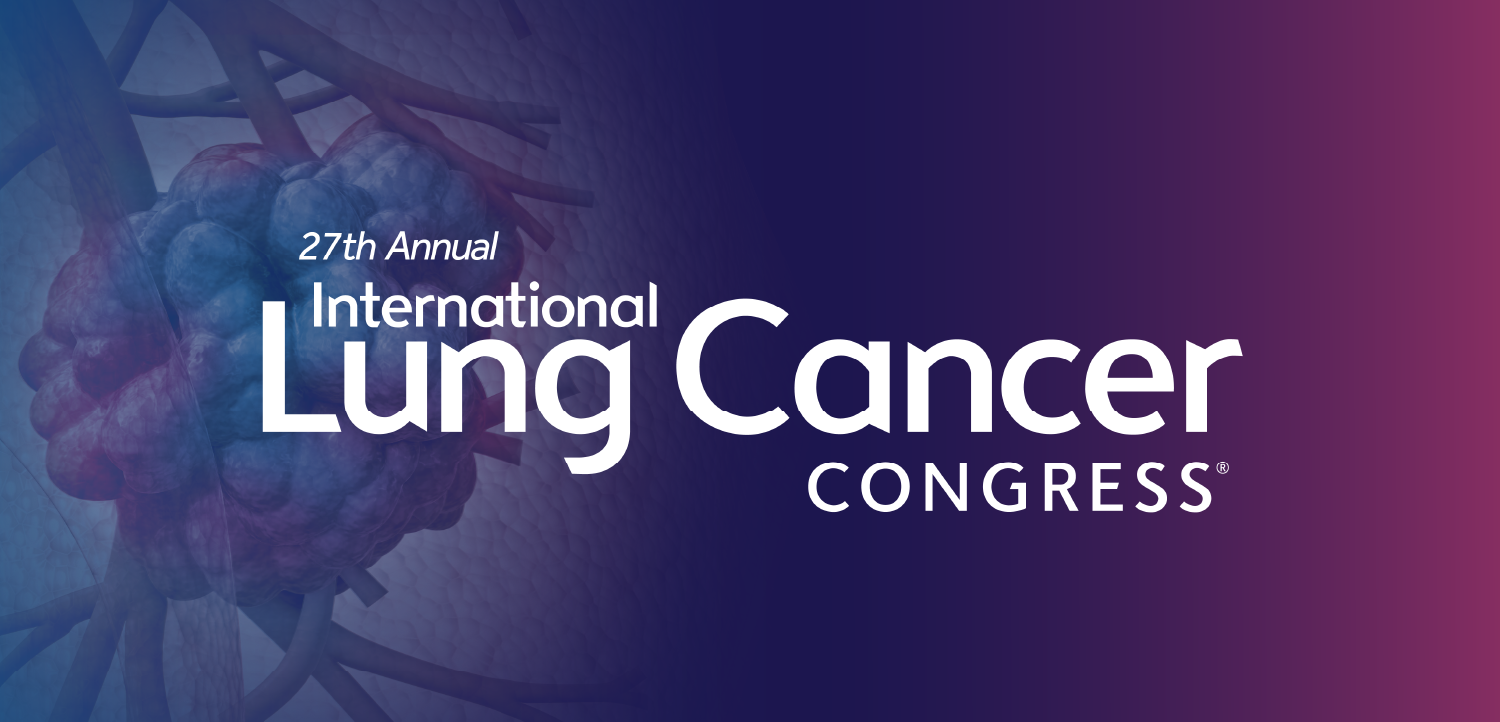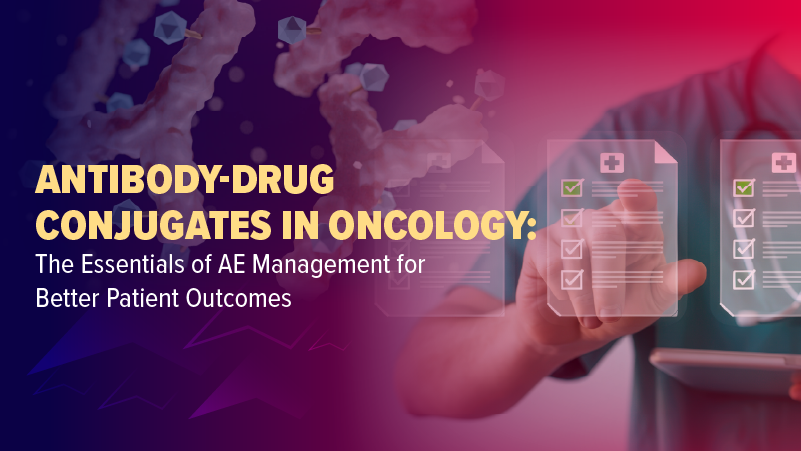- MHE October 2024
- Volume 34
- Issue 10
Conference Insider: 2024 PBMI Annual National Conference
The 2024 Pharmacy Benefit Management Institute (PBMI) Annual National Conference was held Sep. 4-6 in Orlando, Florida. Managed Healthcare Executive is the official publication of the institute. Here is a sample of our coverage.
New standards could pave the way for more efficient prior authorization
Efforts are underway by health plans and technology providers, aided by new standards developed by the CMS, to make the prior authorization (PA) of prescription drugs more seamless. Panelists during a session at the 2024 PBMI Annual National Conference discussed how technology is advancing to allow the prior authorization process to operate behind the scenes through electronic systems that are integrated with health plan information.
Eventually, the hope is that the systems set up to manage e-prescribing and prior authorization will be integrated with electronic medical records to allow providers to see which drugs require prior authorization at the point of prescribing and facilitate that process
“Instead of PA being something that engages members and providers, in this day and age where we have the access to data, this can be something behind the scenes that we would just code for in the benefit design,” said Kerri Tanner, Pharm.D., the chief pharmacy officer of PayerAlly, a specialty pharmacy consulting firm, who moderated the session.
Before that goal of an integrated electronic PA process can be realized, however, several challenges need to be addressed, including the adoption of new standards and the integration of systems. Even more critical is convincing providers of the benefit such a system.
“There’s far too much faxing still happening in healthcare today,” Tim Capstick, regional vice president of health plans at Surescripts,said. Surescripts processes about 23 billion transactions a year, but just 10% are e-prescribing transactions. The cost of implementing electronic systems is still a barrier for smaller health plans, pharmacy benefit managers and
providers, he said.
“There’s some opportunity in the prior authorization space and in healthcare in general to tap into the clinical information exchange and automate that use,” Capstick said. “We as the stakeholders need to help some of the smaller organizations so that they can adopt the technology.”
The panelists at the session discussed how a prospective workflow for prior authorization can reduce the administrative workflow for providers and their staff and create a more efficient process for making sure that patients are able to get the appropriate medications.
Humana was an early adopter of e-prescribing and prior authorization with the implementation of a retrospective system in 2014, which Morgan Bojorquez, M.Eng., an associate vice president of pharmacy clinical integration at Humana, said created many efficiencies and enabled a prior authorization workflow that had a turnaround time of 12 hours.
Humana has also initiated a prospective workflow from the electronic health system but found that prescribers are more likely to adopt a retrospective system.
“They wait for the pharmacist to tell them that the medication requires PA for the patient,” Bojorquez said.
Humana strives to implement solutions that support physicians at the point of prescribing, as well as pharmacists. One example, he mentioned was the process Humana implemented for approving prescriptions for glucagon-like peptide 1 (GLP-1) therapies. “We have the ability, at the point of sale, to evaluate the full medication profile of a patient when a claim comes in for a GLP-1. We don’t stop every claim,” said Bojorquez. For about 10% of claims Humana processes for a GLP-1 therapy, there is no evidence of diabetes. For those claims, Bojorquez said Humana leverages in real-time medical and pharmacy claims to look at historical medications to see whether patients have diabetes. “We try to completely avoid the PA process by leveraging data and technology to facilitate that process.”
Bojorquez said this is the future of prior authorization. But for it to be implemented on a larger scale will mean bringing together data from multiple sources and unifying standards.
CMS is leading the way in bringing new standards for interoperability of data. Earlier this year, CMS introduced the Fast Healthcare Interoperability Resources standard for application programming interfaces to improve the electronic exchange of healthcare data and to streamline prior authorization processes.
These standards would allow for electronic prior authorization for medical services. Payers will be required to implement the prior authorization standards by Jan. 1, 2027, although some operational provisions should begin in January 2026. The standards apply across programs the CMS oversees, including Affordable Care Act plans, Medicaid and Medicare Advantage, and the Children’s Health Insurance Program.
At this point, the CMS rule doesn’t apply to prior authorization for prescriptions, but that could change in the future, according to an analysis by KFF.
One limiting factor, however, for widespread adoption of electronic prior authorization is the restriction of access to data for nontreatment use under the rules of the Health Insurance Portability and Accountable Act. “In many cases, there are handcuffs on what you can do that use patient data for up to and including a prior authorization. If those handcuffs were to come off and it’s done responsibly, we could really streamline and make the prior authorization process very efficient,” Capstick said.
That’s where he said that qualified health information networks come in. These are network of organizations that work together to share data and ensure interoperability between the networks they represent. There are currently seven qualified health information networks, according to the Office of the National Coordinator for Health Information Technology.
“The intention is to remove the handcuffs, so to speak, of the information that is in an [electronic medicalrecord] and open that up to not only treatment use cases but also nontreatment use cases, payment and operations,” Capstick said.
Medicare Star ratings could drop with new equity emphasis
Recent methodology changes to the Star rating system for Medicare Advantage and Part D plans will make it harder to maintain higher ratings, according to speakers at a session at the PBMI Annual National Conference.
The changes for 2025, which CMS announced in April 2024, impact the measures for the Health Equity Index (HEI) and risk adjustment and how these are weighted. CMS, in its new release, said the aim of the change is “to advance health equity; drive comprehensive, person-centered care; and promote affordability and the sustainability of the Medicare program.”
But the overall impact will be to make it more difficult to maintain Star ratings and could potentially reduce revenue for Medicare Advantage plans, said Phil Nelson, a consulting actuary for Milliman. “A methodology change is going to completely change the Health Equity Index reward factor,” he said. “This will decrease payments to Medicare Advantage organizations.”
Medicare uses a Star rating system to measure how well Medicare Advantage and Part D plans perform. It measures plans in several categories, including quality of care and member experience. Ratings range from one to five stars, with five being the highest.
The ratings were initially introduced in 2007 to help beneficiaries when choosing plans, and later CMS added financial incentives to reward Medicare Advantage plans that provide high-quality care, said Jay Blomquist, pharmacy management consultant at Milliman.
The 2024 Star rating used in 2025 bids includes nine domains comprised of 42 measures, of which 12 are for assessing Part D prescription drug plans.
The Medicare Advanrtage plans were rated based on measures such as health screening and testing, managing long-term conditions, member experience with the plan, health plan customer service, and handling customer complaints. Part D plans were rated based on similar measures, as well as drug safety and accuracy of drug pricing.
“About 10% of Medicare contracts are at a three-star rating or below and about 6% are at five stars,” Blomquist said.
The Star ratings that will be published in October 2024 for calendar year 2026 bids will likely impact plan revenue in 2027 and 2028, Nelson said. The impact, he said, will be on Medicare Advantage plans, but not the Part D Prescription drug plans, Nelson said.
“The Star rating program, and companies’ ability to achieve higher ratings, has a substantial impact on the financial viability of a Medicare Advantage organization,” he said. “I tell my clients that to be viable, you need four stars.”
Currently. CMS focuses on patient engagement, but how that is weighted in the Star calculation is changing, which will impact 2027 payments. For three years, CMS had used a four-times weight on patient engagement but is returning to two-times weight.
Nelson suggested that plans should shift their resources based on this change, which could result in a $3.3 billion savings over 10 years.
But he said the changes to the HEI and the risk-adjusted adherence measures will have the largest impact on plans. In 2026, CMS will assess plans based on a new measure of health equity.
CMS’ goal is to improve care for enrollees with social risk factors, including those who are low-income, dual-eligible or disabled, and officials are working to address health disparities. CMS has outlined several priorities for this effort, including expanding the collection and analysis of data, assessing the causes of disparities with policies to close gaps, increasing accessibility, and building capacity with healthcare organizations.
“Currently, the reward factor favors plans with high Star ratings and with consistent high Star rates across all 40 measures. Essentially, these are the plans getting four- or five-Star ratings across the board,” Nelson said. “This is changing. The methodology will evaluate the Star ratings for every measure, but just looking at a subset of a plan’s population, specifically members with social risk factors.” He added that this changeis estimated to save CMS more than $5 billion over the next 10 years, about $500 million a year. For plans that have enrolled a large number of beneficiaries with social risk factors, CMS will add up to 0.4 points to a plan’s Star rating.
CMS is providing Star ratings both with and without the new HEI methodology. “Health plans and PBMs have essentially about two years to make sure that they look at that data and try to implement any improvements that should be made before it’s actually measured for real in 2026,” he said.
Keynote speaker Doug Long sees healthcare system fragility, ‘pretty anemic’ launches as he looks ahead to retirement
In what is likely to be one of his final presentations, Doug Long, MBA, painted a rather bleak picture of U.S. healthcare system and the prospects for the pharmaceutical industry in his keynote address the morning of the second day of the 2024 PBMI Annual National Conference.
Surveying issues ranging from cancer screening rates that haven’t recovered from the decline during the COVID-19 pandemic to low returns on investments for generic and biosimilar manufacturers to the declining number of retail pharmacies and “pharmacy deserts,” Long said he had never seen the industry in a “more fragile state.”
He also took a swipe at the Inflation Reduction Act — “some people in pharmaceutical land call it the innovation reduction act instead of the Inflation Reduction Act" — and noted that through June, only 26 new drugs have been launched this year and that that the FDA has approved only 22 new molecular entities. “The launch landscape in 2024 has been pretty anemic,” Long said.
Long, a vice president of industry relations at IQVIA, has been a frequent speaker at the pharmacy and managed care meetings for decades, announced after he was finished with his presentation that he would retire next May when he turns 74.
Long’s rapid-fire delivery and voluminous slide decks have become set pieces at meetings such as PBMI’s annual meeting. Long said that Zantac (ranitidine) was the top-selling drug when he got started presenting, then it was Lipitor (atorvastatin), followed by Humira (adalimumab) and Ozempic (semaglutide). He mentioned
Here are a few highlights from Long’s talk.
Tough times for retail pharmacy. Long described the beginning of the year as “perfect storm” for retail pharmacies as direct and indirect remuneration fees changed from being retrospective to prospective; the unfavorable economics of the glucagon-like peptide 1(GLP-1) inhibitors that means some pharmacies lose money on every prescription the Change Healthcare cyberattack. Long also spoke about CVS and Walgreens closing stores and Rite-Aid’s bankruptcy creating “pharmacy deserts” in rural and urban areas.
The prescription opioid epidemic has ebbed but not the overdoses. The opioid epidemic that was fueled by prescription narcotics “is in the rearview mirror,” Long said, and has been since 2011 and continues to subside. Yet more people in the U.S. are overdosing today than ever before because of illegal fentanyl and methamphetamine, according to Long.
Prescriptions rejected, drugs not taken. Long shared data showing that out of every 100 prescriptions written, 51 are rejected by the original payer, but 17 are then subsequently approved by a new payer. After that, though, 18 prescriptions are “abandoned” — not picked up by patients. ”There’s a big challenge (a) in getting somebody on a prescription and (b) to get them to continue to on that prescription,” Long said. Long also shared IQVIA data showing that of the 100 prescriptions filled for chronic disease, after a year, only 31% patients were “persistent” in continuing with prescriptions for the medication. “This is pretty lousy when you think about it,” Long said.
Oncology launches are down. Long said one of the notable trends in new drug launches, in addition to the overall number falling off, is the relative lack of new oncology drugs. In 2022 and 2023, oncology drugs accounted for the largest proportion of new drug launches when drugs are grouped by the diseases that they treat. So far, in 2024, they are not among the top three categories. “I don’t know whether that’s because oncology has gotten more saturated than ever before. There are multiple options … there are eight PD-1s [programmed cell death 1] and there’s not as much room for innovation. We’ll have to see. But that’s a big that’s a big difference.”
The future of infusion therapies is in ambulatory care centers
Mike Baldzicki envisions a time when cell and gene therapies will be administered at ambulatory infusion centers instead of hospital centers of excellence. Aided by newer technology — such as smart infusion pumps, technology that delivers precise medication and remote monitoring — infusion centers of excellence will be able to provide a more cost-efficient solution for delivering these and other infusion therapies.
“The rare disease pipeline and the gene cell therapy markets are growing, and there are nuances around having to customize patient care that will impact the medical benefit,” said Baldzicki, who is chief commercial officer at Polaris Specialty Pharmacy. “How do we adjust to the next phase of healthcare, looking at how do we quickly work with consumers but also looking at how do we manage cost?”
During a session at the PBMI conference, Baldzicki discussed how infusion centers will be able to meet the needs of the growing number of patients who will be eligible for infusion and cell and gene therapies.
“I’m a big believer that, based on the pipeline we’re seeing in gene and cell therapy, ambulatory infusion centers will become an appropriate site of care,” he said. “Digital technology and [artificial intelligence] and adaptive tools will allow for a holistic approach and allow for us to customize programs based on the appropriate site of care.”
The cell and gene therapy market is growing. There are more than 30 cell and gene therapies approved by the FDA. All of this development will lead to increased costs for payers. From 2022 to 2023, spending on cell and gene therapies increased 38%, to $5.9 billion, according to a recent report from the IQVIA Institute for Human Data Science.
Spending on next generation therapies is expected to grow 3 1/2 times to $18 billion in four years. By 2032, there could be almost 50,000 patients a year who could be treated with gene therapies, predicts a
Over the past two years, gene therapies have been approved by the FDA with increasingly higher list prices. The most recent, Lenmeldy (atidarsagene autotemcel) has the highest ever price for a new treatment: $4.25 million.
The costs of gene therapy are not limited to the gene therapy itself. Some therapies that bone marrow be removed to manufacture the therapy, and the therapy is then infused into the patient. Other therapies require the administration of chemotherapy prior to the gene therapy.
The FDA is also approving novel therapies for diseases with larger patient populations, Baldzicki said. “The definition of rare disease is changing. It usually means a population of 20,000 or [fewer], but what we’re seeing in newer launches, especially therapies with a first-of-kind mechanism, is that they are hitting larger populations. This means we’re going to see population eligibility for a product launch in the hundreds of thousands. With price tags increasing, especially in rare disease, there will be hundreds of thousands of dollars of costs beyond the therapy.… One claim could bankrupt a teachers’ union or school district overnight.”
Baldzicki said there is an opportunity for employers and payers to consider carving out the infusion services and provide care through ambulatory infusion centers. One report estimates the value of the global ambulatory infusion center market to be $47.1 billion in 2024, with a 10.6% compound annual growth rate.
“We’re already seeing some innovative programs with the Blues plans working with provider groups to provide options outside of the hospital, whether buy-and-bill and treating the patient in the office, partnering with a specialty pharmacy or treating the patient at home,” he said. “We’re seeing new models and it’s just not for [total parenteral nutrition] and hydration products. It’s [intravenous immunoglobulin] products. It’s rheumatology. Payers are getting more robust with their product selection because of the way they’re working with local provider groups.”
Baldzicki stressed that the provider is key for developing these programs. “We have to have a patient and provider focus. Larger groups are being more collaborative with providers so there is less disruption for the patients, and we are seeing more demand from patients.”
Competing on Price
“You’ve got independently owned specialty pharmacies that are wanting to get in the networks of these payers … but they don’t have that opportunity without companies like Free Market Health or Waltz Health that are creating a network of providers where the network can set their price point, and then the network provider can say, ‘Hey, for drug A, I’m willing to dispense that drug at this price point.’ It may be because they get additional value because they are a 340B provider or are in an area of the country where they can get that drug at a lower price point.”
Three ingredients in the PBM legislation
“I think the three things we can likely guarantee because they’ve been pretty universal in the legislation that we’ve seen — and there’s been a lot of legislation in the House and Senate — is the elimination of spread pricing under Medicaid, pass through of 100% all rebates and then some type of pretty robust reporting requirements. Transparency is the name of the game in D.C. this year and in this Congress, not just for PBMs.”
Articles in this issue
about 1 year ago
A Conversation With IQVIA's Luke Greenwalt, MBAabout 1 year ago
How AI is Changing Healthcareabout 1 year ago
One Key to Healthcare? Just Getting Thereabout 1 year ago
Diabetes Quality Measures Have Challenges But Also Successesabout 1 year ago
2024 PBMI Annual National Conferenceabout 1 year ago
The Type of Health Insurance You Haven’t Heard OfNewsletter
Get the latest industry news, event updates, and more from Managed healthcare Executive.


















































